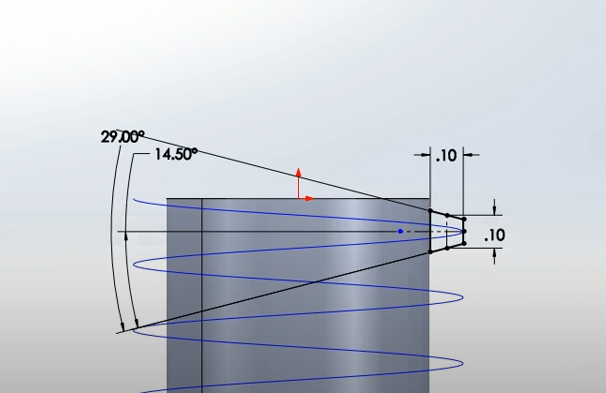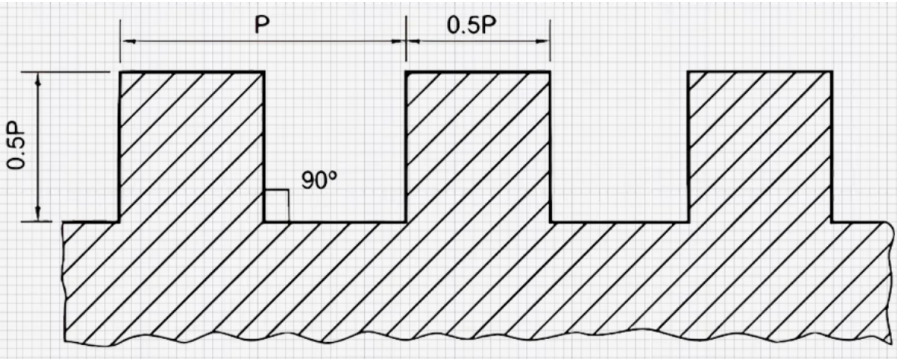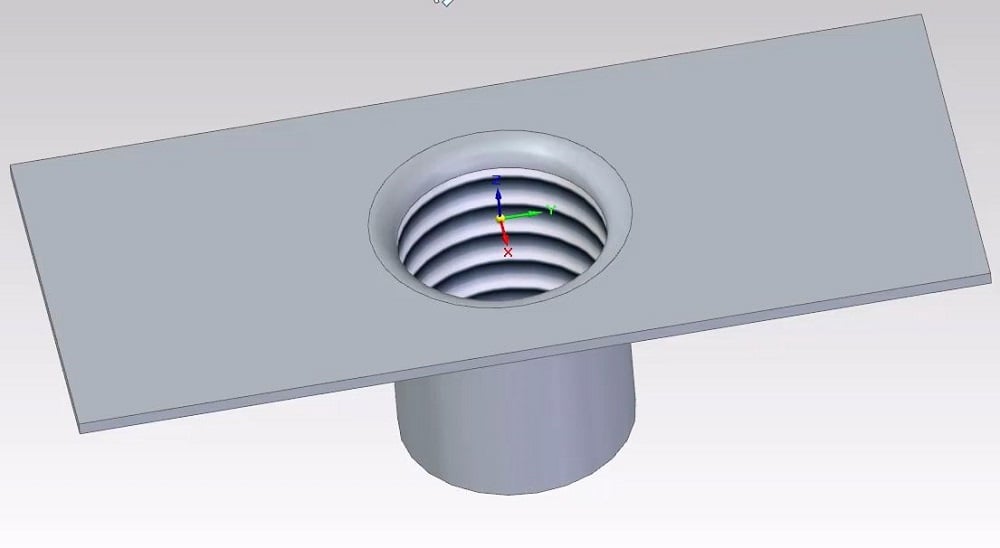Threads are a type of common feature produced on components including connectors, fasteners, couplings, filters, valves, manifolds, fittings and more. Understanding the types of threads, parts, terminology, and how to identify threads can help you work with these mechanical components or CNC parts.
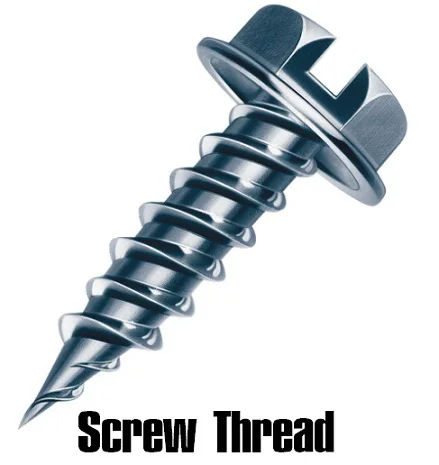
What is A Thread? – Screw Thread Explained
A thread is a helix ridge wrapped on the inside or outside of a cylinder or cone, which forms straight threads or tapered threads. The thread is the essential feature of the screw as a threaded fastener, used to convert between rotational and linear movement or force. Threads are set at an angle to the axis of the fastener or component, like a screw and bolt. Thread sizes are given in nominal sizes, not in the actual measurement. Threads are designated by the major diameter of the external thread and a pitch measurement.
Basic Concepts, Terms and Terminology of (Screw) Threads – Different Parts of a Thread
You can get a more intuitive understanding from the figure below.
1. Thread crest: the prominent part (top point) of a thread.
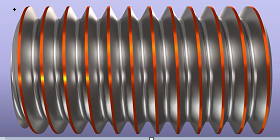
2. Thread root: the bottom of the groove between the two thread flanks.
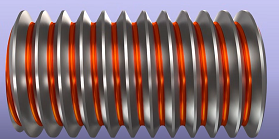
3. Thread flank: the surface of the thread which connects the crest and the root.
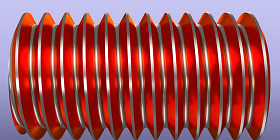
4. Thread pitch: the distance from the crest of one thread to another crest measured along the length of the thread.
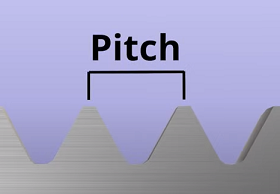
5. Thread diameter: There are three characteristic diameters of threads: major diameter, pitch diameter, and minor diameter.
- Major diameter: The larger of two extreme diameters delimiting the height of the thread profile. The major diameter of external threads is normally smaller than the major diameter of the internal threads.
- Minor diameter: The lower extreme diameter of the thread. The minor diameter of a nut is its inside diameter.
- Pitch diameter: The pitch diameter of a particular thread is the diameter of an imaginary coaxial cylindrical surface that intersects the thread flanks at equidistant points.
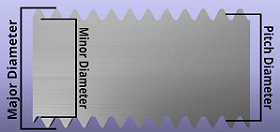
6. Thread depth: the distance between the crest and the base of the thread measured normal to the axis.
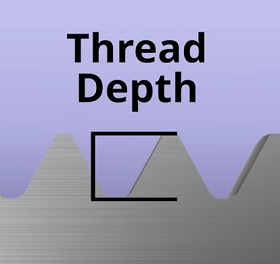
7. Helix angle: the angle between any helix and an axial line on its right, circular cylinder or cone.
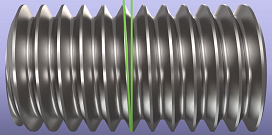
8. Thread angle: the included angle between the thread flanks, measured in a plane containing the thread axis.
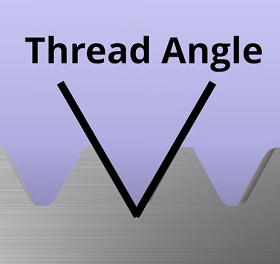
Screw Thread Terminology Diagram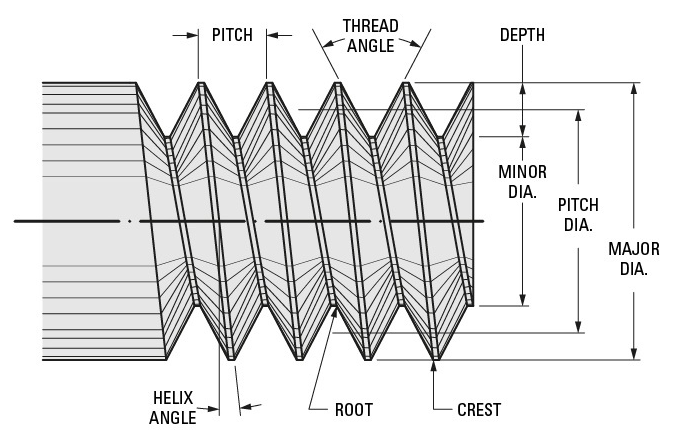
Different Types of Screw (Fastener) Threads
1. Metric Thread
The most widely used general-purpose screw thread system globally, conforming to ISO standards. It features a 60° pitch angle with a flat crest and a rounded root. The thread is defined by its pitch, which is the distance between adjacent threads measured in millimeters. For example, M8x1.25 indicates an 8mm diameter thread with a 1.25mm pitch. This standardization has made metric threads the preferred choice in most industrial applications worldwide, particularly in Europe and Asia. The system’s straightforward measurement scheme and widespread adoption make it ideal for standard assemblies requiring bolted connections.

2. Inch Thread
Commonly used in the United States and some other countries, shares the 60° thread angle with metric threads, but uses a different measurement system. Instead of pitch, it uses TPI (Threads Per Inch) for thread specification. For example, 3/8-16 denotes a 3/8 inch diameter thread with 16 threads per inch. Inch threads come in various standards, with UNC (Unified Coarse) and UNF (Unified Fine) being the most common. The coarse pitch is the default thread type according to ASME standards, offering good strength and ease of assembly in general applications.

3. Whitworth Thread
Developed by Joseph Whitworth in 1841, was the first standardized thread form. It features a 55° thread angle, distinguishing it from metric and inch threads, with rounded peaks and roots. While largely superseded by metric threads in many applications, Whitworth threads remain prevalent in the United Kingdom, Commonwealth countries, and specific industries like aerospace. Their rounded profile provides good strength and wear resistance, making them particularly suitable for applications requiring durability.

4. ACME Thread
An ACME thread is characterized by its trapezoidal profile with a 29° thread angle, flat crests, and roots. This design makes it one of the strongest symmetric thread profiles available. Acme threads excel in applications requiring controlled linear motion and high load capacity, such as lead screws, testing machines, jacks, aircraft flaps, and conveyors. The trapezoidal shape provides better load distribution and lower friction compared to V-threads, making them ideal for power transmission applications.

5. Modified Square Thread
A variation of the Acme thread, featuring a trapezoidal profile with a smaller pitch angle. This design results in extremely low friction and high transmission efficiency, so square threads are ideal for precision motion control applications. The reduced angle compared to Acme threads provides better efficiency in power transmission, but at the cost of slightly reduced strength. These threads are commonly used in high-precision equipment where smooth, efficient motion is crucial.

6. Buttress Thread
Features an asymmetrical profile with one square face and one slanted face, typically at a 45° angle. This unique design allows for excellent load-bearing capability in one direction while maintaining relatively low friction. Buttress threads are particularly effective in applications involving unidirectional loads, such as lead screws, turning and milling machines, and heavy lifting equipment. Their asymmetric profile makes them ideal for applications where the load is primarily applied in one direction.

7. Sharp V Thread
This type is characterized by pointed peaks and roots without truncation. This thread form allows the same cutting tools to be used for all pitches, simplifying manufacturing processes. While not suitable for linear motion or power transmission applications, Sharp V-threads excel in locomotive work where they naturally form steam-tight joints when properly machined. They are also used in specific applications requiring frictional connections, such as anti-fatigue shafts or tension anchors.

8. Worm Thread
A specialized form similar to Acme threads but designed specifically for worm gearing applications. These threads can have multiple starts per worm and follow specific rules regarding pitch to ensure proper mesh with worm gears. They are crucial components in worm gear systems, providing efficient speed reduction and power transfer capabilities. The design allows for smooth operation and high reduction ratios in a compact space.

9. Knuckle Thread
Knuckle thread features a highly rounded profile on both crests and roots, making it exceptionally resistant to wear and debris. The large spaces between threads provide ample room for debris to be cleared, preventing interference with thread engagement. This unique design is particularly valuable in harsh environmental conditions, such as mining operations, locomotive applications, and industrial machinery, where contamination is a concern. Their rounded profile also reduces stress concentration, improves durability in high-load operations.

How to Identify Threads
You need two tools for identifying different types of threads: a caliper and a pitch gauge. The caliper is used to measure the diameter of a thread, and the pitch gauge is used to measure the thread pitch, which refers to the distance between the crests of threads.
1. Check whether the thread is straight or tapered. If the thread diameter becomes smaller towards the end, it is a tapered thread; if the diameter remains the same at the top and bottom of the thread, it should be a parallel thread. Parallel threads include UN/UNF, BSPP, and metric parallel series, while tapered threads include NPT/NPTF, BSPT, and the metric tapered series.
2. Measure the thread pitch. With the pitch, you can calculate the number of threads within a given distance. Different thread types have different pitch sizes.

3. Determine thread sizes. If your thread is a pipe thread (NPT/NPTF, BSPT, BSPP), compare the size of the thread with a nominal size profile, if it is the non-pipe thread (UN/UNF, Metric Parallel, Metric Tapered), use the caliper to measure the outside diameter. You can also measure the diameter of the tapered thread in the 4th or 5th full thread and measure the diameter of the parallel thread at any thread position.
4. Identify the thread. With all the parameters you obtained in the above steps to find the right thread type.


